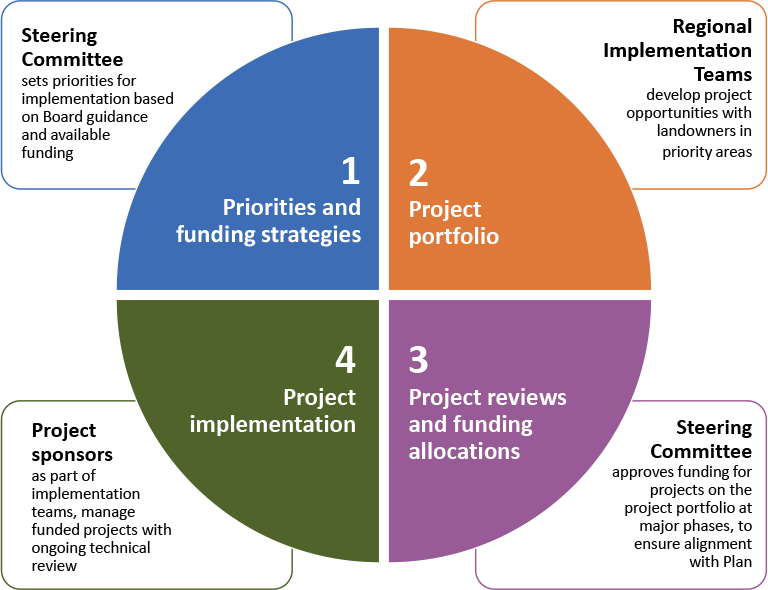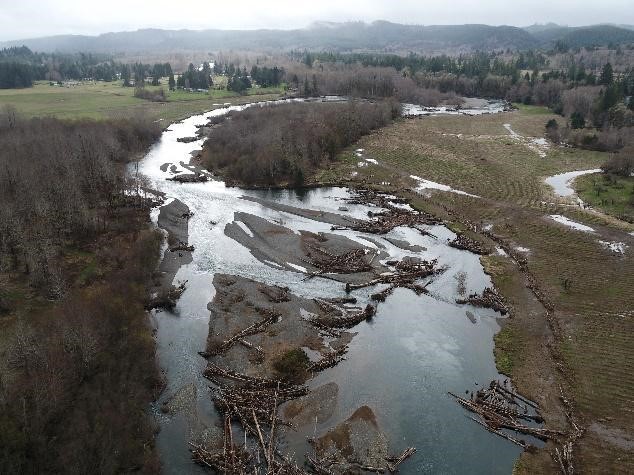Protecting Chehalis Basin Habitats Through Collaboration and Community
The Aquatic Species Restoration Plan (ASRP) is a key component of the Chehalis Basin Strategy. The science-based plan is designed to improve and restore aquatic habitat in the Chehalis Basin, as well as protect communities and landscapes from the predicted increase in flooding disasters.
The Chehalis Basin is made up of nearly 3,400 miles of streams and rivers that provide critical habitat to salmon, other native fish species, and Washington’s largest diversity of amphibians, including the federally endangered Oregon spotted frog. Both the Quinault and the Chehalis people are inseparably linked with the watershed, where they have stewarded salmon, steelhead, and other species and the habitat upon which they depend for thousands of years. For generations, people have also relied on the Basin’s fertile land for agriculture and timber harvest.
Flooding is a normal part of the Chehalis Basin, but decades of intensive land use have changed our lands and waterways, putting homes, businesses, towns, and fish and wildlife at greater risk.
The ASRP is designed to provide smart guidance and diligent work with willing landowners while honoring existing community values, leading to more investment in the natural systems that support our economy.
Habitat Restoration Achievements
$50.7 million has been invested in the Aquatic Species Restoration Plan, resulting in 70+ completed and active projects that restore and protect priority habitats for native aquatic species.
Aquatic Species Restoration Plan Structure
The ASRP is overseen by a Steering Committee who has collaboratively developed program priorities and a structure for how projects will be developed and funded

Aquatic Species Restoration Plan Symposium Events
The ASRP Steering Committee hosts symposium events to share the scientific knowledge that has come from Chehalis Basin Strategy investments to better understand Basin ecosystems. The events offer an opportunity to provide feedback and ideas on continued ASRP development and implementation.
Early Action Reach Projects
The Washington Department of Fish and Wildlife (WDFW) worked with community partners to initiate several habitat restoration pilot projects in the Chehalis Basin referred to as Early Action Reach projects. These project areas include the Skookumchuck, Wynoochee, Satsop, and Newaukum rivers, and on Stillman Creek, a tributary to the South Fork Chehalis River.
Each of the WDFW-sponsored river restoration projects includes:
- Installing native trees and shrubs
- Removing invasive species such as blackberry and knotweed
- Constructing engineered log jams
- Reconnecting floodplain and off-channel habitats.
Partner Resources
The ASRP relies on partnerships with local project sponsors and willing landowners.
Resources for potential partners
Interested in learning more about restoring habitat for aquatic life on your property? View our potential partner resources to:
- Learn where the ASRP is focusing on upcoming project funding.
- Get in touch with a Regional Implementation Team lead to learn how to get involved in implementing habitat projects.
Resources for current partners
Are you currently involved with a project to restore habitat for aquatic life? View our current partner resources to:
- Review detailed ASRP implementation structure, processes, and expectations.
- Learn about technical project review criteria categories.
Quarterly Project Reports
Annual Reports
Get More Information
To stay up-to-date on the Chehalis Basin Strategy and ASRP, including how you can get involved, sign up for our email list.

